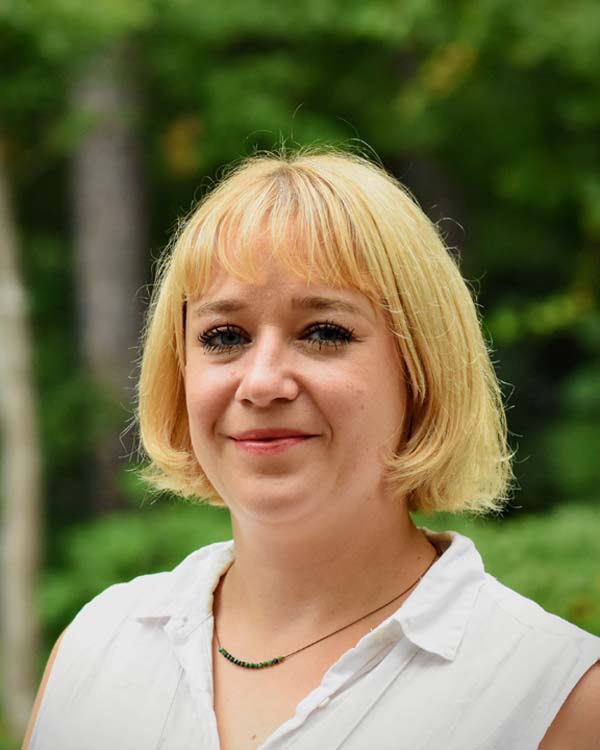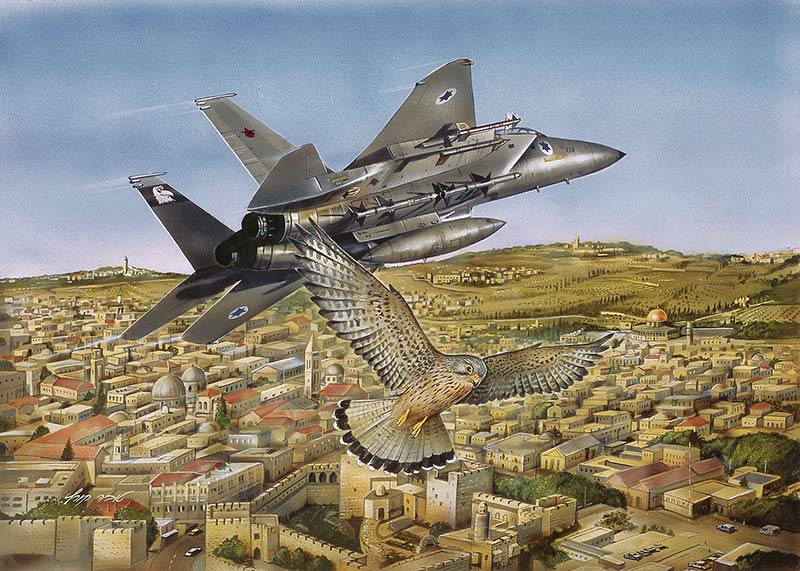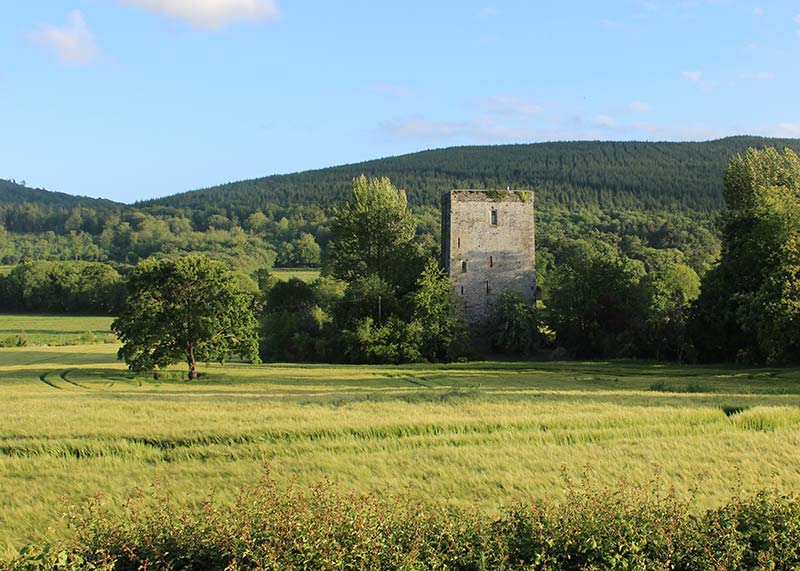In this issue we highlight the research of Fellows from the class of 2021–22 who are looking at colonialism’s lasting effects, not only on the lives of humans that inhabit a colonized place, but on the indigenous plants and animals with whom they share it.

Irus Braverman
Professor of Law and Adjunct Professor of Geography, State University of New York at Buffalo
Victoria L. McAlister
Associate Professor of History, Southeast Missouri State University
Paul S. Sutter
Professor of History, University of Colorado Boulder
Irus Braverman
Project: Settling Nature: The Biopolitics of Conservation in Palestine/Israel
Irus Braverman is professor of law and adjunct professor of geography at the State University of New York at Buffalo. For much of her career, she has advocated a move away from anthropocentric approaches in law and for a re-examination of the role of nonhuman animals in the dispossession and marginalization of human and nonhuman life. Her recent research explores the intersection of law and the life sciences, and she is involved in multiple transdisciplinary conversations and forums with conservation biologists, veterinarians, and geneticists. Braverman’s work has taken her back to her birthplace of Palestine/Israel, where she applies political ecology approaches to rethink the meaning of settler colonialism for both human and nonhuman animals in the region.

What was the initial spark that led you to this project?
This book is not really the “sparkly” kind. I probably started collecting materials for it when I was born, and the state of Israel planted a pine tree in my name in Jerusalem’s so-called Peace Forest. I still have that certificate. Ever since, nature and politics have weaved through my life so intensely that it feels like this book is really my life project. The book considers nature conservation in Palestine/Israel from a settler colonial perspective. It draws on ethnographic encounters with Israeli nature officials conducted over the last decade, and on reflections that go back to my army service as a nature educator and to my time monitoring birds in the desert as well as to my work as an environmental organizer and lawyer in Palestine/Israel.
What are the big questions that you are considering?
The bigger questions are probably—first, what is the relationship between nature conservation and settler colonialism in Palestine/Israel? And, second, what parallels (and differences) can be drawn vis-à-vis nature conservation in other settler colonial contexts?
Alongside these big questions, there are the little stories, which are actually the backbone of this project. Aside from being fantastical and whimsical and imaginative, the stories I tell here illuminate in a fresh way the violences of colonialism. Vultures, goats, fallow deer, goldfinches, gazelles, wild asses, camels, boars, cows, olive trees, and zaatar and akkoub, alongside specific habitats and landscapes of nature protection, perform various roles in the settler colonial apparatus of this place.
Although I am not sure if it is big or small, another question I have been struggling with is how to write in an interdisciplinary style. Interdisciplinarity is usually perceived as inherently good. But its price is often not spelled out. Insisting to write this book to a range of disciplinary audiences—and, in particular, to geographers, anthropologists, environmental historians, settler colonial scholars, and conservationists—the result is more eclectic and less homogenous than one might desire. The good news is that reading through it will be a challenge for everyone.
What new avenues of inquiry do you hope this research will prompt or make possible in your field?
As far as I know, this is the first comprehensive study of nature conservation in Palestine/Israel from a settler colonial perspective. This nexus is meaningful for settler colonial studies, which are typically quite anthropocentric. Exploring power and violence through the lens of nonhumans such as animals, national parks, and natural landscapes illuminates aspects of settler colonialism that often go unnoticed, especially that nature is usually seen as benign and neutral, which lends it even more power. The nexus is also meaningful for animal studies, as this field has typically been concerned with violence toward nonhumans, and not so much with how this violence is interconnected with that exercised toward humans. I hope that this research will prompt inquiries into how decolonizing nature might look like, for humans and nonhumans.
Victoria L. McAlister
Project: The Insular Globe: Environmental Change and Landscapes of Colonization‚ Ireland, 1000–1700
Victoria L. McAlister is a historian and archaeologist at Southeast Missouri State University, where she is associate professor and graduate coordinator for the MA in Public History. She is archaeology and architecture contributor to Castle to Classrooms, a digital humanities project creating virtual reality versions of the Renaissance poet Edmund Spenser’s castle. McAlister is currently writing her second book, The Insular Globe: Environmental Change and Landscapes of Colonization, Ireland 1000–1700, which assesses two premodern colonial events and their impact on the Irish landscape, challenging the global narrative that resource exploitation was a feature of modernity.

What was the initial spark that led you to this project? What are the big questions that you are considering?
While I was conducting fieldwork for my previous book, The Irish Tower House, I was struck by how these castles were sited to enable their occupiers’ engagement with, and exploitation of, the natural environment. I came away from that project with a strong impression of these castle occupants’ personalities. That is, I got the distinct feeling that these were avaricious individuals living in a time of decentralized political authority where they had freedom to exploit and make money! I started to consider what landscapes they were gaining from, and how. A central issue to my book is therefore integrating medieval people and their actions into wider discourses about human-environmental exchanges. Many aspects of natural resource exploitation are viewed as manifestations of modernity; my research finds that humans were just as greedy before the modern age.
In the course of your research have you run across anything that genuinely surprised you? What can you tell us about it?
Our lack of appreciation for pre-modern Ireland’s connectivity with both Europe and an Atlantic World in part originates in the dearth of surviving written documentation from the time. I believe we can gain the best perspective on the past through multidisciplinary investigation and sheer creativity. There are some truly strange things in medieval documents that I spend probably too much time trying to shoehorn in! Such as the mermaids washing up every few centuries on Irish shores. These references were too good not to create a new section in a chapter—headed “puella marina”—where they are discussed alongside seaweed farming and shell middens (tongue firmly in cheek, of course)! There is even a “camel” sent from Scotland to the south of Ireland—I presume it was a weird looking horse or cow and nobody knew the difference. I was relieved though not to have to read too much about how whales were hunted off the Irish coasts—brutal reading even across the centuries.
What new avenues of inquiry do you hope this research will prompt or make possible in your field?
I consider myself both a historian and archaeologist and this has given me an appreciation of the written word, the material world, and the contribution science and new technology can make to our knowledge of the past. I hope my research articulates that the humanities provide a way of thinking that successfully incorporates many forms of evidence, even those that seem very different from one another. I also intend on making pre-modern history and Irish history better integrated into broader historical debates surrounding environmental change. Many central works in the field skip over the Middle Ages, but my book will show that we cannot understand the Anthropocene without examining what came before in what is too often mislabeled “The Dark Ages.”
Paul S. Sutter
Project: Pulling the Teeth of the Tropics: An Environmental History of the U.S. Sanitary Program in Panama
Paul S. Sutter is professor of history at the University of Colorado Boulder. He has published numerous articles and book chapters on the American wilderness movement, southern environmental history, U.S. imperial environmental history, and environmental historiography, including a 2013 state-of-the-field essay in the Journal of American History. Sutter is the series editor for Weyerhaeuser Environmental Books, published by the University of Washington Press and was the founding editor of the Environmental History and the American South book series published by the University of Georgia Press.

What was the initial spark that led you to this project? What are the big questions that you are considering?
Thirty years ago, just as I was beginning graduate school, I was reading David McCullough’s popular history of the Panama Canal, The Path Between the Seas. At that point, environmental history was still a relatively new field, and I was viewing everything through an environmental history lens. Two things struck me about the canal story McCullough told, and particularly the story about the pioneering public health efforts in Panama: how the Americans celebrated the completion of the canal and the control of diseases such as malaria and yellow fever as a conquest of the tropics, and how the recently discovered mosquito vectors for both of those diseases helped the Americans to recognize that malaria and yellow fever had complex material ecologies. I filed those thoughts away as I pursued other research projects, but I knew I would return to the Panama Canal at some point.
My book project is both an intellectual history of American (and Western) ideas of the tropics, and particularly how such ideas changed as a result of U.S. sanitary efforts in Panama, and a social and ecological history of how these diseases spread in Panama. One question I hope to answer is how environmental ideas contributed to the construction of U.S. empire. Here I argue that tropicality was the environmental imaginary of extracontinental expansion for the United States, just as wilderness had been for continental expansion. I am also interested in how ideas of race intersected with these environmental ideologies—how ideas of the tropics contributed both to racial segregation and uneven health outcomes during canal construction. My big argument is that diseases that many saw as the products of tropical nature were in fact the products of the social and environmental transformations caused by canal construction.
In the course of your research have you run across anything that genuinely surprised you? What can you tell us about it?
The most surprising aspect of this project for me, as an environmental historian, has been how complicated diseases are to write about in history. Medical historians know this well, having struggled for a long time with questions of retrospective diagnosis and historically dynamic understandings of disease. Still, an earlier generation of environmental historians treated diseases as simple things; they were discrete non-human entities—viruses, bacteria, parasites—that shaped human history. In fact, they were ideal examples of the central claim that environmental historians make on the discipline more broadly: that non-human nature has been a powerful force in shaping human history. But, as a number of environmental historians have already pointed out, reducing diseases to discrete disease agents—or, with malaria and yellow fever, to their mosquito vectors—vastly oversimplifies how diseases work in the world. Diseases are in fact always complex assemblages of the human and more-than-human.
What new avenues of inquiry do you hope this research will prompt or make possible in your field?
There are several. I hope this project encourages U.S. historians to pay more attention to the environmental history of U.S. empire, and to better recognize the transnational dimensions of U.S. environmental history. Another is to further what some are starting to call the ontological turn in environmental history. I hope to tell a story about U.S. public health efforts during the construction of the Panama Canal that pushes beyond the categories of nature and culture—beyond an outdated causal logic that sees diseases as products of nature that spill over into human history. At a moment when we are dealing with a global pandemic that has demonstrated the continuing power of narratives that naturalize disease, with often pernicious results, it is clear to me that we desperately need to recognize that nature is history.
